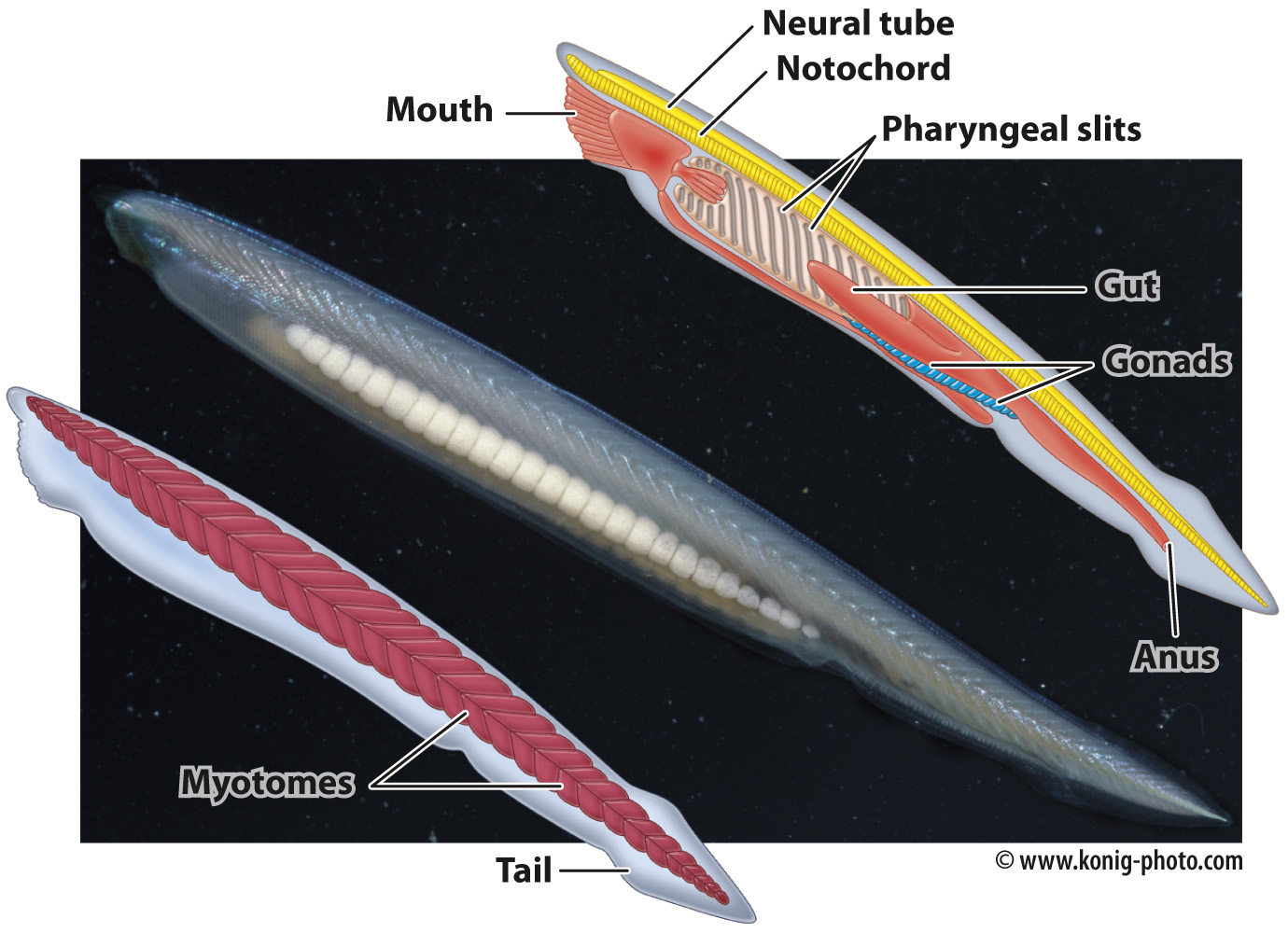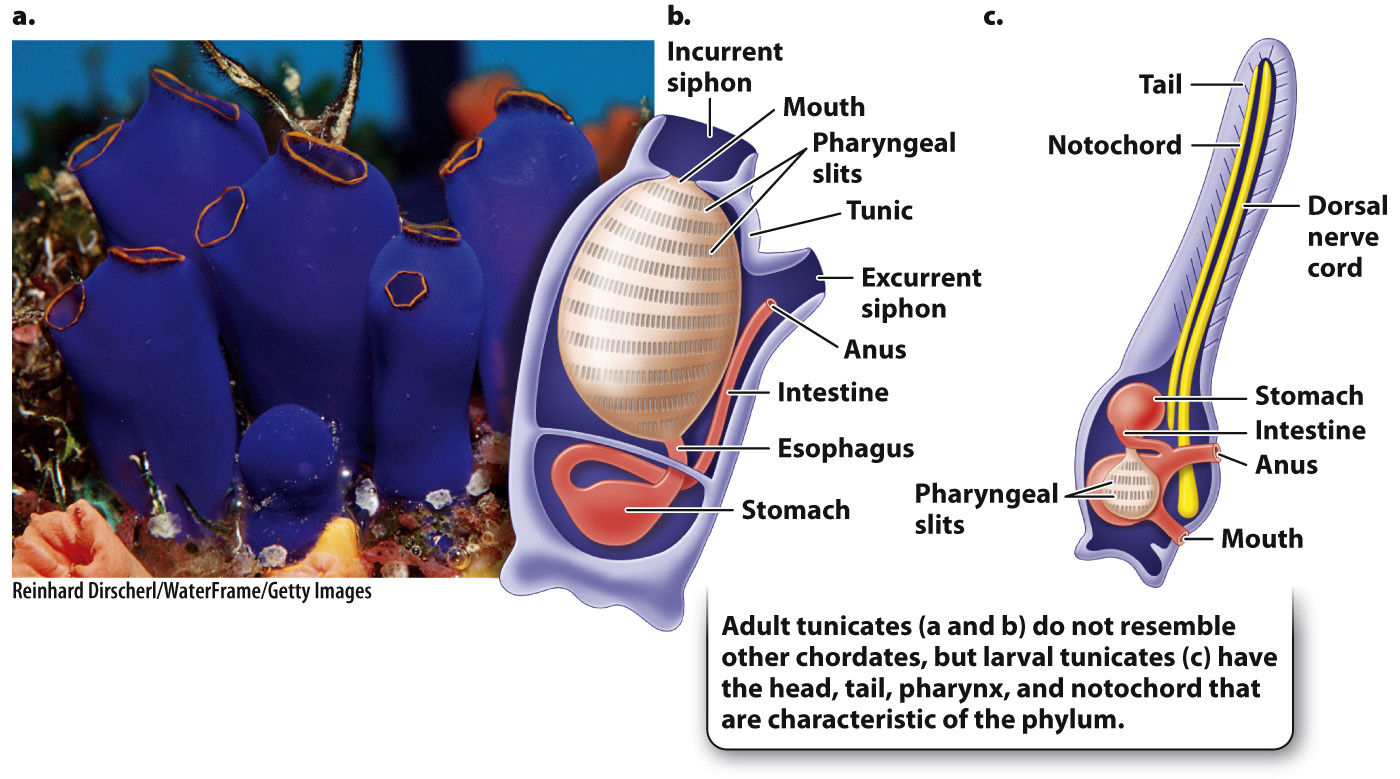Chordates include vertebrates, cephalochordates, and tunicates.
The other great branch of the deuterostome tree is the chordates, the phylum that includes vertebrate animals. Within the phylum Chordata, there are three subphyla: the cephalochordates, the tunicates, and the vertebrates (also called craniates). Like hemichordates, chordates all have a pharynx with pharyngeal slits (illustrated by the invertebrate chordate amphioxus, shown in Fig. 44.28). In fish, these pharyngeal slits form the gills, but in terrestrial animals like humans, these slits can be seen only in developing embryos. The notochord, a unique feature of chordates, is a stiff rod of collagen and other proteins that runs along the back, providing resistance for the muscles along each side in some chordates. In vertebrates, the notochord is apparent only during early embryogenesis and is replaced functionally by a vertebral column later in development. Also forming during early development is the neural tube, a cylinder of embryological tissue that develops into a dorsal nerve cord. Body musculature is organized into a series of segments called myotomes, most visible in fish as the flakes of muscle that become separated when the fish is cooked. Chordates have a tail (reduced but still internally present in humans and other apes) that extends posterior to the anus, and some chordates have muscularized appendages that include the fins of fish and legs of terrestrial vertebrates.

965
Amphioxus (Fig. 44.28) belongs to the cephalochordates. These animals share key features of body organization with vertebrates but lack a well-
966
The tunicates also share key features of the chordate body plan during early development, but they have a unique adult form (Fig. 44.29). Tunicates include about 3000 species of filter-

A tunicate might be mistaken for a sponge, but its complex internal structure shows that it lies far from sponges on the animal tree. The tunicate’s body wall, or tunic, has a siphonlike mouth at one end that draws water through an expanded pharynx that captures food particles and exchanges gases. Water and wastes are expelled through an anal siphon. In the adult tunicate, the only obvious similarities to other chordates are the pharynx and its pharyngeal slits. Larval tunicates, however, resemble other chordates like fish or tadpoles with a more typical chordate body plan, including a notochord, neural tube, and a long tail with muscles arranged in myotomes.
For many years, zoologists considered cephalochordates to be the closest relatives of vertebrate animals, but molecular data now suggest that, in fact, the tunicates are our closest invertebrate relatives. This means that the common ancestor of tunicates, amphioxus, and vertebrate animals was a small animal much like amphioxus in organization. After the divergence of the three major groups of chordates, however, the tunicates’ adaptation for filter-
Quick Check 4 You do not have a notochord, a tail, or pharyngeal slits. How do we know that you are a chordate?
Quick Check 4 Answer
Young humans and other young animals often have features that they lose as they age. Our first “baby” teeth are an example. If you could look at a photograph of yourself when you were a 1-